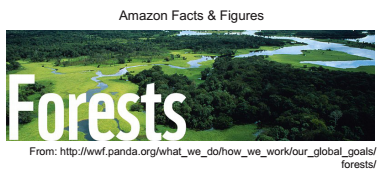Questões de Concurso Militar CBM-BA 2017 para Soldado do Corpo de Bombeiro
Foram encontradas 2 questões
Leia o texto
Education in Brazil: a plan for change
After three-and-a-half years of debate and conjecture in Congress, Brazil’s national education plan (PNE) was finally passed into law in July 2014
The scope of the PNE is vast, setting 20 targets covering all aspects from pre-school to professional training within a ten-year timeframe, and no fewer than 253 strategies by which to achieve them. Its key proposals include:
Investment
Federal spending on education is to increase from 5.6 percent of GDP to at least 7 percent by the fifth year of the plan and 10 percent by 2023. The diference will be funded by profits from Brazil’s pre-salt oil exploration, but the challenge is spending the money efficiently, something not usually associated with the public sector.
Access
All children aged four to five will be guaranteed a place in school by 2016, and half of those up to the age of three will be able to attend a public crèche by 2020. The plan will also increase assistance for those with special needs to achieve universal access via improved facilities and training.
Literacy
The plan aims to ensure that all children will be able to read and write by the third year of secondary school, and to eradicate illiteracy in those aged 15-plus by 2020. It will also reduce functional illiteracy by 50 percent. UNESCO research shows Brazil has the eighth highest level of adult illiteracy in the world.
Teachers
The plan will create a national policy forthe continued training of teachers and education professionals and will ensure that, by the tenth year, 50 percent of teachers working in primary education will have completed a graduate course in their specialist field. It also aims to increase the average teaching wage to the same level as professionals of a similar level of training.
Higher education
The PNE will seek to enrol 50 percent of 18 to 24-year-olds into higher education and increase those into public universities by at least 40 percent, whilst also ensuring 75 percent of lecturers have a master’s degree and 35 percent possess a doctorate.
This content was commissioned by the Report Company, who take sole responsibility for it.
Disponível em:<https://www.theguardian.com/the-report-company/2015/ may/18/education-in-brazil-a-plan-for-change> . Acesso em: 13 jul. 2017.
Analise as afirmativas abaixo, dê valores Verdadeiro (V) ou Falso (F).
( ) Depois de três anos e meio de debate no Congresso, o Plano Nacional de Educação foi, finalmente, transformado em lei no mês de julho de 2014.
( ) De acordo com o texto, o investimento em educação poderá chegar em 10% do Produto Interno Bruto (PIB) no quinto ano do Plano Nacional de Educação, ou seja, em 2019.
( ) Segundo o texto, o Plano Nacional de Educação prevê um plano de carreira para os professores de tal sorte que eles, em média, receberão o que os demais profissionais com mesmo nível de formação recebem.
( ) O Plano Nacional de Educação visa reduzir o analfabetismo funcional em 50% já que, de acordo com pesquisa da Unesco, o Brasil tem o 8º maior nível de analfabetismo funcional do mundo.
Escolha a sequência correta
Leia o texto.

The Amazon rainforest covers an area of 6.7 million km2 over 8 countries:
Brazil, Bolivia, Peru, Colombia, Ecuador, Guyana, Suriname, Venezuela, plus French Guiana.
About 1/2 of the planet’s remaining tropical rainforests are found in the Amazon, and at least 10% of the world’s known species.
The Amazon Basin accounts for 15% - 16% of the world’s total river discharge into the oceans.
About 30 million people live in the Amazon, including more than 300 indigenous groups.
Extraído de <wwf.pand.org> . Acesso em: 11 jun. 2017.
A organização da informação apresentada no texto
acima obedece a uma regularidade, que consiste em: